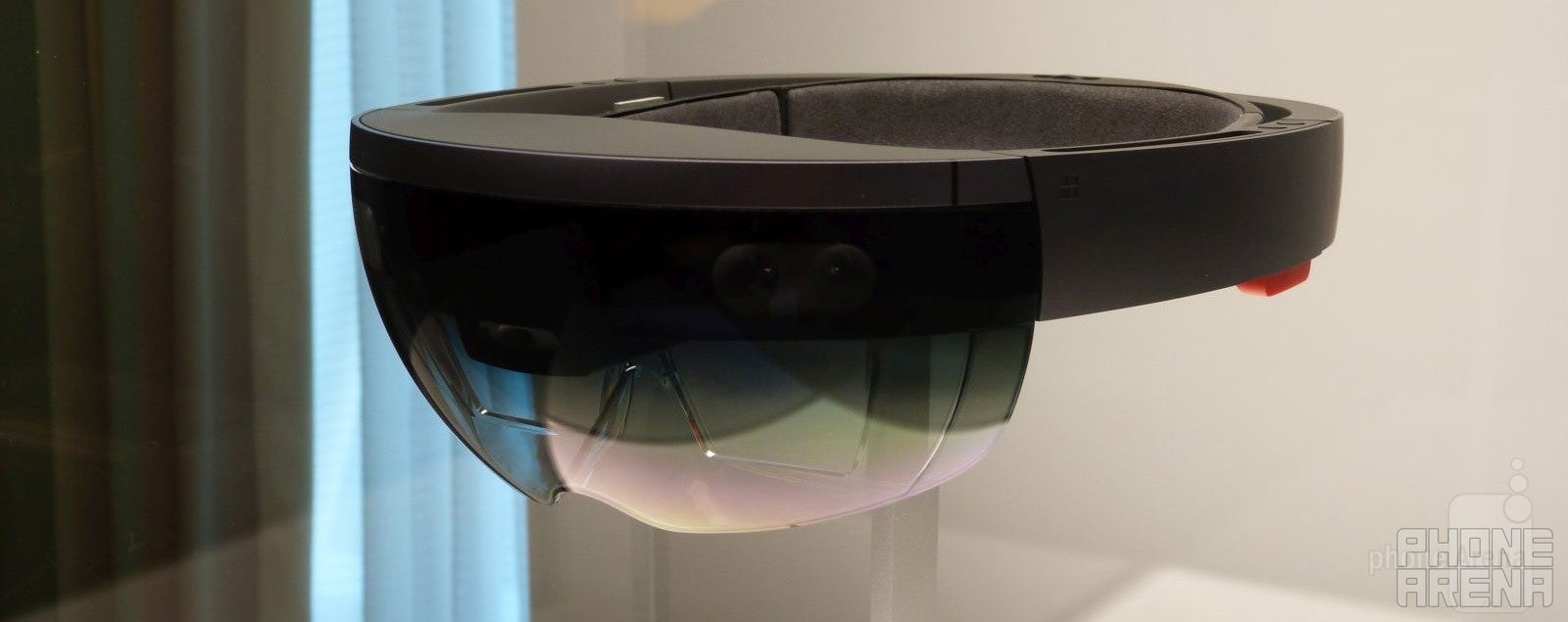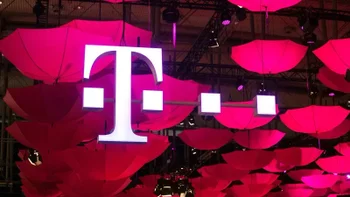We used Microsoft HoloLens and it is awesome!

Let’s just state it plainly: This tech is really cool, and it is going to change the world. We will also state it plainly that HoloLens is not ready for prime time…yet.
Microsoft set up tightly orchestrated, scripted, and highly secure demonstrations of HoloLens for developers and members of the media. It was a multi-phased affair, and was managed off-site from the Moscone Convention Center where the main conference was being held.
HoloLens, Skype, Minecraft, and 3D printing
The first stop in the demonstration was a live performance given by Dan and Joe. Joe donned HoloLens while Dan went backstage and manned his PC (running Windows 10 of course). Joe executed a Skype video call with Dan. After showing how the video image (called a card) could be moved and pinned to certain parts of the room, the two then began trading holograms and each could manipulate the virtual space.
One of those holograms was a caricature city skyline of San Francisco. They made some changes to it and then sent it to a 3D printer. After that, Dan showcased a model of the Seattle Space Needle he created in Minecraft. He then passed it to Joe in the HoloLens environment where both of them could manipulate and resize the model. Joe scaled it down, and placed it on a shelf in the make-shift room that was the stage setting.
The 27th floor
As soon as that performance was done we gathered our items from their lockers and were escorted again to the elevators and whisked to the 27th floor of the hotel. Like the lower level, Microsoft has booked the entire floor.
After locking our belongings in another set of lockers we were brought into a room to measure our inter-pupillary distance (IPD), the distance between the pupils of our eyes. This is necessary to properly calibrate HoloLens once it is worn to ensure the user can view the images in the stereoscopic eyepieces. That exercise will need to be streamlined to be end-user programmable for HoloLens’ eventual market release.
Once that was done, each individual in our group was escorted (sense the trend?) to a single room (each room guarded by a Microsoft employee outside) with a pair of demo guides to take us on a journey with HoloLens.
Using HoloLens – what is it like?
See our first point: This tech is really cool, and it is going to change the world. The main head band fits on your head at about the same alignment as you might wear a baseball cap. The arms that are attached to the visor are adjustable, allowing you to comfortably place HoloLens the way you might wear eyeglasses.
The “real” world is not obscured at all by HoloLens, and when the augmented elements appear, it is as if they fit in the room perfectly. In this case, software from construction company Trimble was being used, and a scale-model construction rendering was on display.
The integration of HoloLens and the accompanying computer and mouse was excellent, and very intuitive. Interaction with HoloLens is managed by “Gaze, Gestures, and Voice,” what Microsoft calls “GGV.” The gaze is simply what you are looking at, the gesture we used was air-tapping (like clicking a mouse in the air) and it is used in conjunction with where you are looking. The voice part involved leaving a message for someone in a mock construction set-up. The messages appear as virtual post-it notes on various parts of virtual wall.
The field of vision is a lot narrower than we expected. The holograms are projected in a smaller box overall. Whether this is a technical confinement, or a design decision is not known. The benefit of that is HoloLens does not consume your entire field of view, so you still have your peripheral vision and can maintain situational awareness.
The demonstration was aimed primarily for the enterprise use-case, and while the interface is still a work in progress, it still has commercial and consumer appeal. Much of the demonstration was controlled by one of the guides in the room, but that did not really take anything away from the experience.
Expectations
During its announcement, Microsoft said that HoloLens would be released “within the Windows 10 time frame.” That leaves a wide-open window for when we see a market release of HoloLens.
Microsoft did offer that the developers that engaged in more detailed demonstrations had high-praise for the platform. Given Microsoft’s Universal platform for apps, HoloLens has an important role to play.
What we got to use was clearly still a work in progress, but Microsoft is putting considerable resources behind the effort. That is a doubled-edged sword, expectations are being set very high early in development. That means HoloLens must be an undisputed home run once it reaches end-user heads.
Follow us on Google News









![A new Android bug is making it impossible to install new apps. Are you affected? [UPDATE]](https://m-cdn.phonearena.com/images/article/176703-wide-two_350/A-new-Android-bug-is-making-it-impossible-to-install-new-apps.-Are-you-affected-UPDATE.webp)

Things that are NOT allowed:
To help keep our community safe and free from spam, we apply temporary limits to newly created accounts: